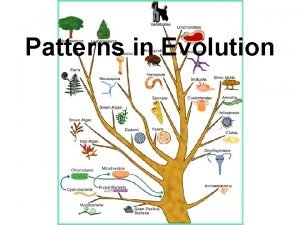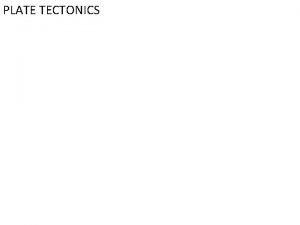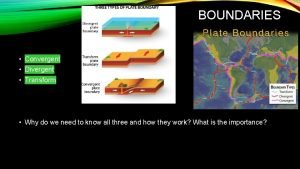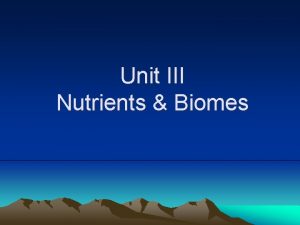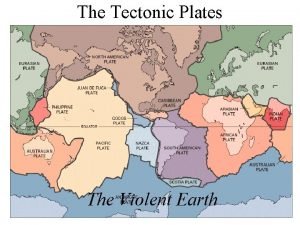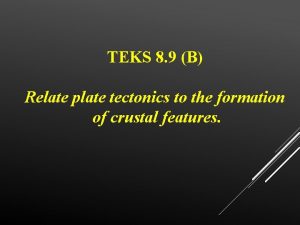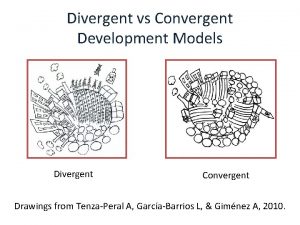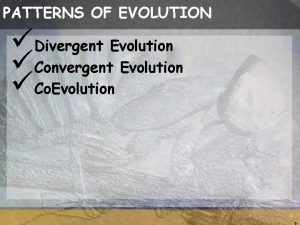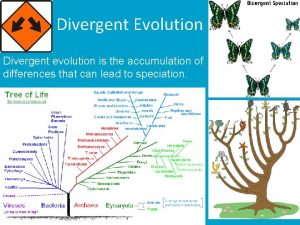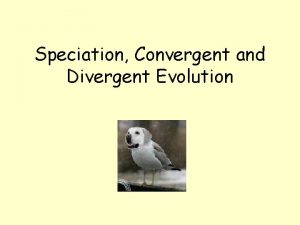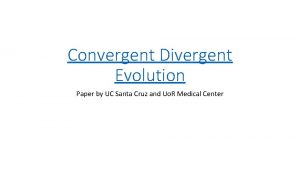Convergent and Divergent Evolution Notes on notes Listen














- Slides: 14

Convergent and Divergent Evolution Notes on notes: Listen to what I have to say first then copy it down. You don’t have to write anything in red.

Questions 1. What is Divergent evolution? 2. What is the evidence for divergent evolution? 3. What is convergent evolution? 4. What is the evidence for convergent evolution?

Divergent evolution • When species with a common ancestor evolve into very different forms. This is often what we imagine when we think about evolution. • Evidence: homologous structures – structures that evolved from a common structure. May have the same components but different a function and or structure.

Homologous limb bones

Convergent Evolution • When two very remotely related* species develop very similar forms independently. • Bits of anatomy that strongly resemble structures from another species are called analogous structures. • Analogous structures tend to be superficially alike but constructed differently e. g. insect wings and bird wings. – This is as opposed to homologous structures that are constructed from the same components but look different. *Remember all species are somewhat related

The relationship between insect wings and bird wings is analogous The relationship between different bird wings is homologous

Question: Are these homologous or analogous? Pterodactyl (a reptile) Bird Bat (a mammal) How is this for irony, the above picture is taken from Harun Yahya http: //www. harunyahya. com/refuted 10. php which is an anti-evolution website!

The answer is: both • As forelimbs they are homologous as they evolved from the same components • As flight structures they are analogous since they evolved independently to solve a similar problem. • The line between analogous and homologous can be blurred. This is a reflections of the fact that every living thing is related if you go back far enough.

Convergent Evolution Ichthyosaurus (a reptile) Ichthyosaurus Swordfish (a fish…duh) ^ Dolphin (a mammal)


Why converge? • To fill similar ecological niches and hence solve similar problems. • Limited niches are available – either fill the one available or become extinct • Only a few “engineering” solutions are suitable to fill a niche.

Discussion question • Is evolution all about chance? • How do analogous and homologous structures helps us answer this question?


 Divergent evolution
Divergent evolution Divergent convergent transform
Divergent convergent transform Igninn
Igninn Plate
Plate Divergent convergent coevolution
Divergent convergent coevolution Convergent boundary divergent boundary transform boundary
Convergent boundary divergent boundary transform boundary Continental drift vs plate tectonics theory
Continental drift vs plate tectonics theory Convergent boundary divergent boundary transform boundary
Convergent boundary divergent boundary transform boundary Convergent divergent transform
Convergent divergent transform Divergent or convergent
Divergent or convergent San andreas fault
San andreas fault Telescoping series partial fractions
Telescoping series partial fractions Divergent boundaries
Divergent boundaries Gerenuk behavioral adaptations
Gerenuk behavioral adaptations Similar
Similar
